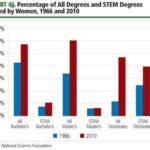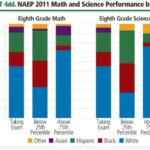Browse Resources by Year
The Canadian Space Agency (CSA) received an FY 2013 budget appropriation of C$## million (US$## million). This figure included Canada’s planned C$## million (US$## million) FY 2013 contribution to the European Space Agency (ESA). The CSA-only budget, excluding ESA contributions, of C$## million (US$## million) represented a ##% increase from the previous year’s C$## million (US$## million).
Read MoreBrazil’s 2013 Federal Budget authorized ## million reais (US$## million) in funding for civil space activities. This represents a decrease of ##% from the implemented budget for civil space activities in 2012. The Brazilian space agency, Agência Espacial Brasileira (AEB), received an authorized funding level of ## million reais (US$## million) in 2013. The Ministério da Ciência, Tecnologia e Inovação, the AEB’s parent organization, received an additional authorization of ## million reais (US$## million) intended to support the joint Brazil-Ukraine Alcântara Cyclone Space (ACS) launch vehicle development program.
Read MoreGlobal military space spending is significant, but difficult to quantify, as many countries do not substantially distinguish between military and civil space programs. Also, information on many aspects of military space spending is not publicly available, especially for sensitive programs such as spy satellites. Despite these challenges, military space spending is estimated using a methodology that combines public data with estimates for areas where data is not available. For example, total U.S. military space spending in fiscal year 2013 is calculated by applying the growth in identifiable DoD unclassified military space programs to the FY 2012 total DoD space spending figure.
Read MoreThe U.S. government operated in a constrained fiscal environment in FY 2013, culminating in a 16-day partial shutdown of the federal government at the onset of FY 2014, due to a lapse in budget appropriations. No FY 2013 appropriations bills passed the U.S. Congress. Instead, agencies were funded under a series of Continuing Resolutions (CR) limiting funding to the amounts spent during the prior year. In addition, agency budgets were reduced by a mandatory percentage, known as the sequester, under the Budget Control Act of 2011. The combination of the sequester and the CR-level funding resulted in an approximately ##% reduction in the NASA budget in FY 2013 as compared to FY 2012. NASA operated with a budget of $## billion in FY 2013.
Read MoreThe United States was responsible for ##% of global government space spending in 2013. During fiscal year (FY) 2013, which ran from October 1, 2012 to September 30, 2013, U.S. government agency space budgets totaled $## billion, a ##% decrease from 2012. Defense-related space activities, comprised of the U.S. Department of Defense (DoD), the National Reconnaissance Office (NRO), and the National Geospatial-Intelligence Agency (NGA), totaled $## billion, or approximately ##% of U.S. government space spending.
Read MoreFocusing on the United States also makes it possible to look at data at a finer level of detail: aeronautical and astronautical engineering (aerospace engineering) degree attainment. Although the space…
Read MoreIn the United States, the number of STEM graduates has been growing at all degree attainment levels. Bachelor’s degrees grew 26% from 2000 to 2010, while master’s and doctoral degrees each grew about 40% over this time period. Data is available on STEM degree attainment in the United States going back to 1966, three years before the Apollo 11 flight that landed on the Moon.going back to 1966, three years before the Apollo 11 flight that landed on the Moon.
Read MoreThe number of STEM first-degree (bachelor’s equivalent) graduates in many space-relevant countries has increased in recent years. The disciplines included here are physical, biological, and computer science; engineering; and mathematics.
Read MoreScience and engineering courses offered at the secondary school level are important for preparing students to pursue STEM degrees. Not only may students with more exposure be more likely to pursue a STEM degree upon reaching university, but research suggests that they are more likely to actually complete that degree.
Read MoreIn addition to participating in TIMSS, the United States also carries out the National Assessment of Educational Progress (NAEP) to assess elementary and secondary students in the United States on subjects including mathematics and science. In October 2013, NCES released the NAEP-TIMSS Linking Study, allowing comparison of U.S. states against international standards.
Read More
